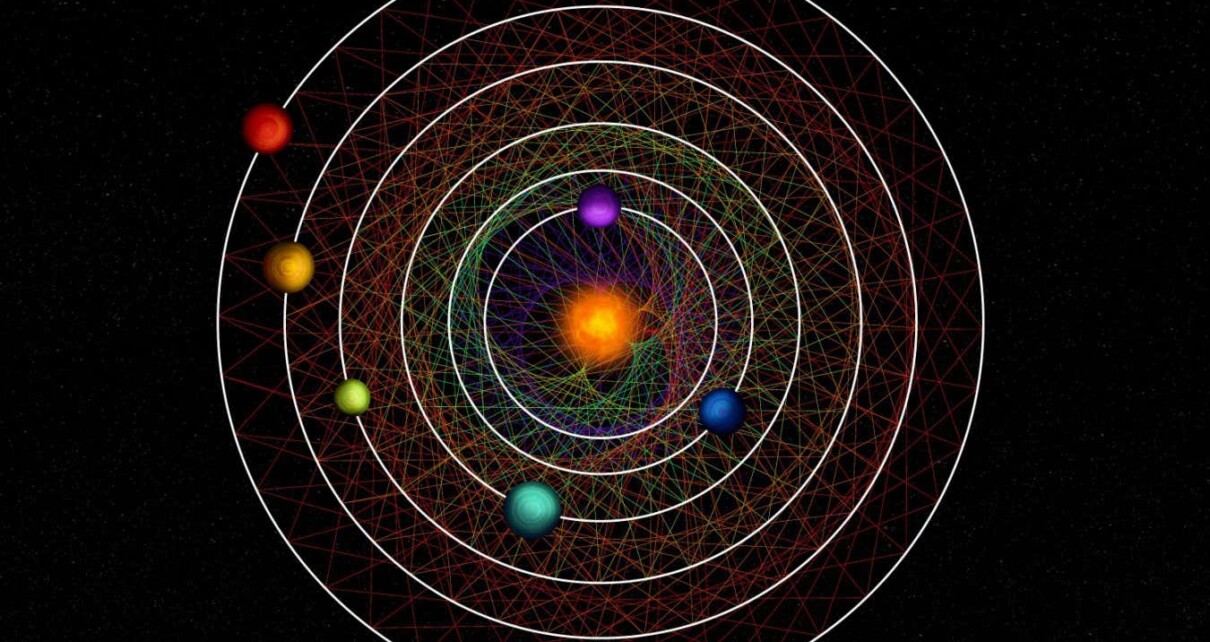[ad_1]
An ancient group of six exoplanets whose orbits have been unchanged for billions of years could tell us about how planetary systems like our own solar system formed.
When planets orbit a star in a fixed, regular pattern, they are said to be resonant. They will continue like this until they are knocked off course by another large object passing nearby or smashing into them, setting them on a chaotic changing orbit. For instance, it is thought that Jupiter and Saturn swapped places early on in the solar system’s formation as they passed close by.
“Once there is a chaotic movement in a system, you will lose the information from initial conditions. You cannot trace back where the planets were in the past,” says Rafael Luque at the University of Chicago. But without this chaotic movement, a resonant system will remain unchanged from its birth, he says.
In 2020, astronomers discovered a pair of resonant planets around the star HD 110067, about 100 light years away, using the Transiting Exoplanet Survey Satellite (TESS). But Luque and his colleagues noticed there were other signals in the data that didn’t make sense. They followed up this observation a couple of years later with TESS and the space-based CHaracterising ExOPlanet Satellite (CHEOPS), and found a third planet, but the signals still weren’t fully explained.
The team looked at simulations of the signal that different combinations of resonant planets would produce — some planets will go around the star three times in the time that it takes another planet to go around twice, for example. This revealed a system involving six planets, all orbiting in a flat plane, that almost perfectly fit the data.
“It is really an impressive feat how perfectly resonant the system is,” says Luque. “If you take a mathematical solution, you could predict the periods [how long the planets take to orbit the star] exactly at the right time where we actually see them.”

The six planets of the HD 110067 system orbit in a regular pattern due to their gravitational influence on each other
Thibaut Roger/NCCR PlanetS (CC BY-NC-SA 4.0)
This perfect resonance means that HD 110067’s planets have probably been like this since they were formed 4 billion years ago. “It’s like a fossil from looking back in time,” says Sean Raymond at the University of Bordeaux in France. “Not much has changed since the gas phase in this kind of system, so you can explore certain aspects of it.”
The planets all have orbits shorter than 50 days and are classified as “mini-Neptunes”, gas planets smaller than any in our solar system, which astronomers don’t fully understand.
HD 110067 is very bright compared to other stars we know of that host mini-Neptunes, so we should be able to glean lots of information about these planets and how they formed, with follow-up observations from telescopes like the James Webb Space Telescope. “This is really the 1 per cent of the 1 per cent in terms of exoplanet systems,” says Luque.
As well as learning about their history, we will probably be able to find out what conditions are like in the planets’ atmospheres and their interiors. Three of the planets appear to have relatively low densities, which suggests they might contain water and which raises the possibility of habitable zones for life, adds Luque.
Topics:
[ad_2]
Source link




